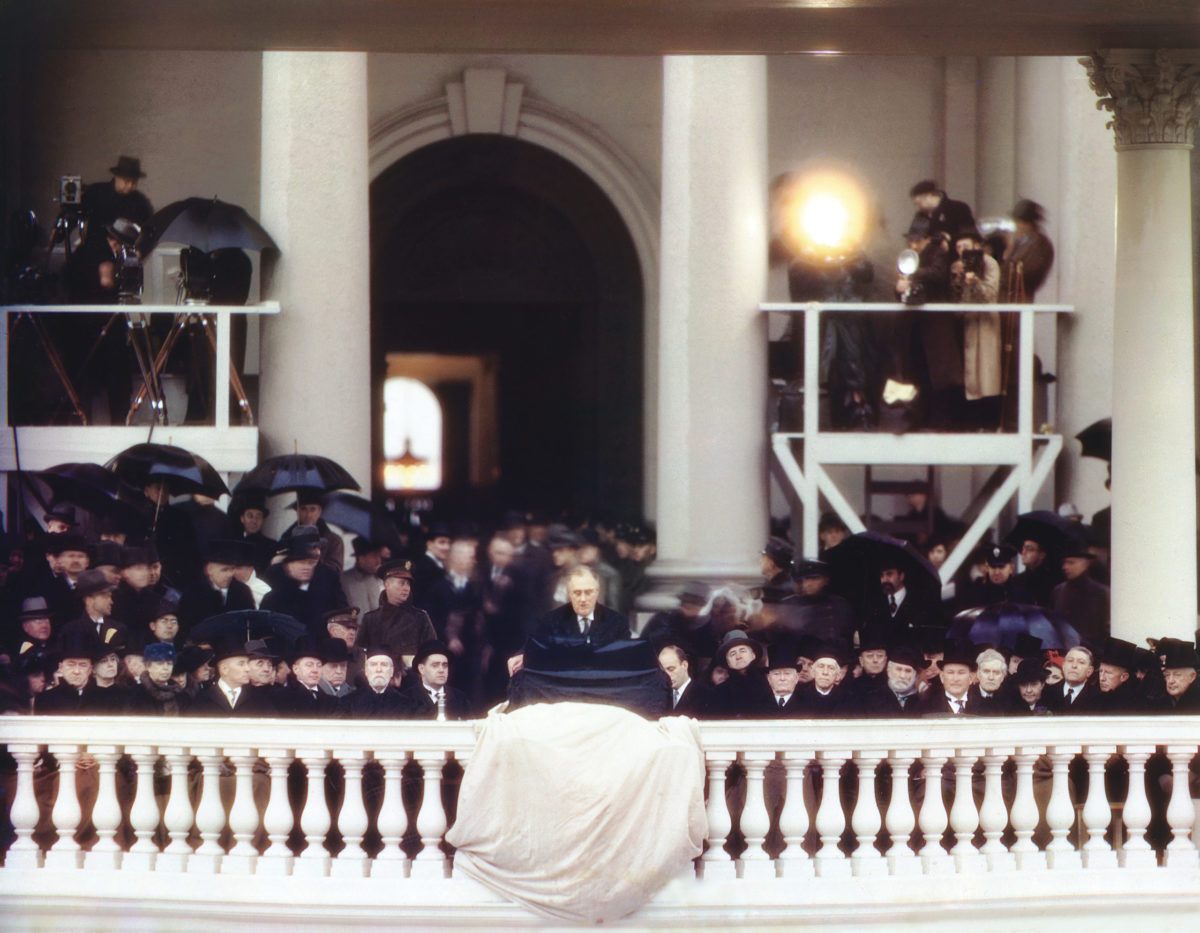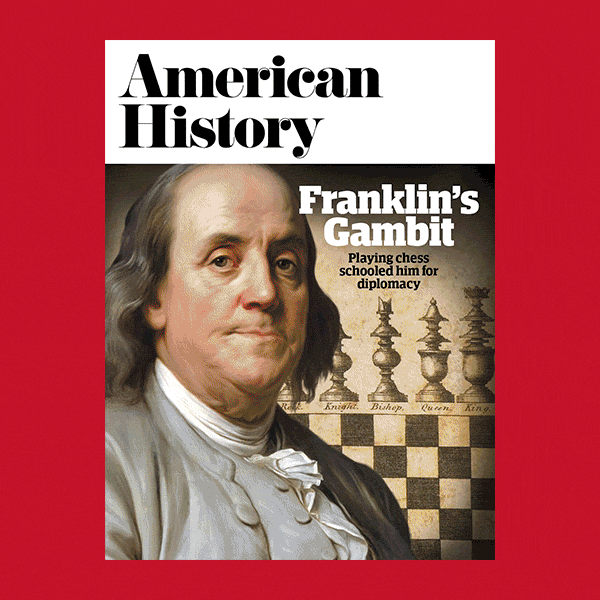President Franklin D. Roosevelt took office in 1933 in the depths of the Depression. Virtually all of FDR’s major New Deal programs were enacted during his first term. An improving economy added to his popularity. The 1934 mid-term elections enhanced his Democratic Congressional majorities, and his landslide re-election and long coattails in 1936 brought the United States closer to one-party government than the republic had been since Reconstruction. But events that occurred during Roosevelt’s second term, notably the defeat of his 1937 proposal to add justices to the U.S. Supreme Court (see “FDR’s Court Packing Scheme”), emboldened Democratic critics. Conservative Democrats began to be more critical of FDR’s progressive agenda, inflicting his first significant legislative defeats. Roosevelt’s solution, “primarying” disloyal Democrats in the 1938 election by endorsing their more progressive opponents, proved to be a political blunder second only to his Court enlargement proposal.
In March 1933, with the economy in free fall and multiple banks failing every day, Roosevelt acted quickly and decisively. He summoned Congress for a three-month special session, which led to his famous “First Hundred Days” of legislative action. Two days after taking office he imposed a bank holiday, and three days later, by voice vote, Congress passed his Emergency Banking Act. Reassured by the president’s first “fireside chat” explaining that their deposits would be insured, people retrieved their money from under mattresses and deposited that cash in banks.
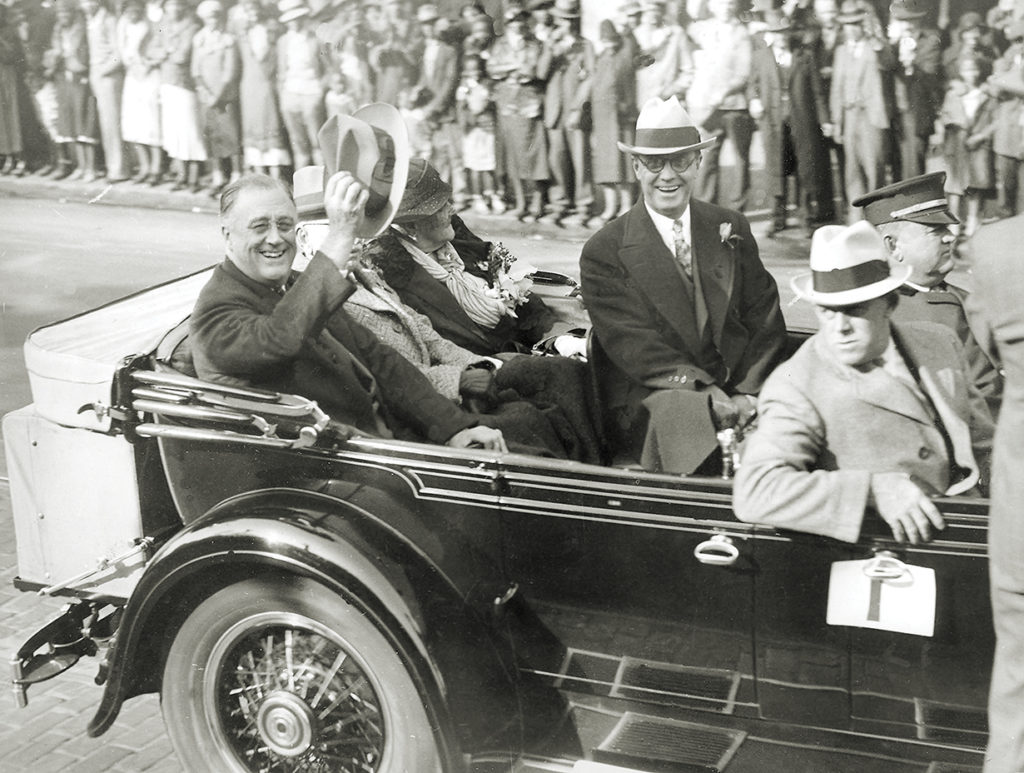
Civilian Conservation Corps job creation, Agricultural Adjustment Act farm subsidies, Tennessee Valley Authority dam construction, and wage and price regulation by the National Recovery Administration were sponsored under laws enacted early on. Social Security for the elderly and the Rural Electrification Act for farmers followed. With an enhanced Democratic majority in Congress after the 1934 mid-terms, FDR continued to focus on economic recovery while also stressing economic reform.
From the beginning, Roosevelt had been able to score some of his progressive victories thanks to support reluctantly lent by certain conservative Democratic senators and despite outright opposition by others. But solons running for re-election in 1936 avoided publicly criticizing Roosevelt and happily rode those long coattails. He defeated Alf Landon in the most resounding presidential election victory since James Monroe ran virtually unopposed in 1820. Already large Democratic majorities in Congress swelled.
Winning every state except Maine and Vermont, Roosevelt believed he enjoyed a resounding mandate for his progressive initiatives. His agenda was far from implemented, and, declaring in his 1937 inaugural address, “I see one-third of a nation ill-housed, ill-clad, ill-nourished,” he signaled a determination to push to obtain additional assistance for the poor and unemployed.
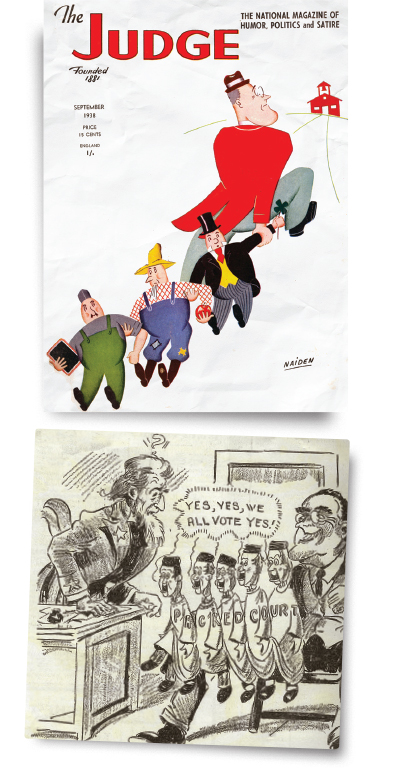
After his Court-packing bill flopped, other setbacks followed. The Fair Labor Standards bill, designed to raise starvation wages, was buried. That measure would have particularly benefited the South, but many Whites there opposed the bill in part because it would have included Blacks. Passed by the Senate late in July 1937, the labor standards bill was bottled up by the House Rules Committee. That panel’s chair, John O’Connor, a New York City Democrat and Tammany Hall loyalist, was a fierce Roosevelt enemy. O’Connor had strong support from conservative committee Democrats Eugene Cox of Georgia and Howard W. Smith of Virginia.
A failed economic initiative early in his second term further sapped Roosevelt’s popularity and his influence over Congressional Democrats. During his first term the improving economy had been his greatest political asset, but in 1937 he bowed to pressure to cut spending and the federal deficit. This restrictive policy, incorporated into that year’s Congressional appropriations bills, magnified the impact of decisions by the Treasury and the Federal Reserve that cut the money supply. The combined effect was to put the brakes on the recovery. Unemployment, which had shrunk from 24.9 percent in 1933 to 14.3 percent in early 1937, began rising, and the stock market began to fall. The 1937-38 downturn was called “the recession within the Depression” or, by opponents, “the Roosevelt recession.” Although the president declined to engage personally, key liberal assistants like Harold Ickes, Thomas Corcoran, and Harry Hopkins sought to divert criticism by blaming businesses for causing the slide by withholding investment to undercut Roosevelt.
Another painful Roosevelt defeat involved a government reorganization bill. The March 1938 proposal was based on recommendations by a commission with impeccable credentials, and FDR considered the bill a non-partisan, good-government proposal. After all, Theodore Roosevelt, Woodrow Wilson, and Herbert Hoover had tried to achieve similar reforms by streamlining the executive branch. But some Democrats chafed at FDR’s dominance of their party and at talk of him seeking an unprecedented third term in 1940. Senator Josiah Bailey of North Carolina, who had seconded Roosevelt’s nomination at the 1936 convention, wrote to the editor of The Charlotte Observer that Roosevelt “wants a party of his own, molded to his own conceptions.” The bill, which would enlarge the White House staff and integrate almost all independent agencies into cabinet departments, amplified critics’ concern about “one-man rule.” The Senate narrowly approved the bill, with 24 Democrats voting nay. But the House, despite a 344-to-88 Democratic majority, recommitted the bill to the Rules Committee, again subjecting the measure to Chairman O’Connor’s wiles. “The fact is, there hain’t goin’ to be no dictator in this country,” O’Connor declared, “not as long as some of us have a voice and two strong hands.” The Chicago Tribune reported the defeat with the headline “Kill Dictator Bill: 204-196.”
By late spring 1938 the previous year’s restrictive financial policies had been relaxed, and the recession was easing. The stock market, after dropping 48 percent in seven months, bottomed out. Unemployment started to decline again after peaking in June at 19 percent. But the political damage had been done, and Roosevelt’s popularity and influence with Congress failed to recover as quickly as the economy.
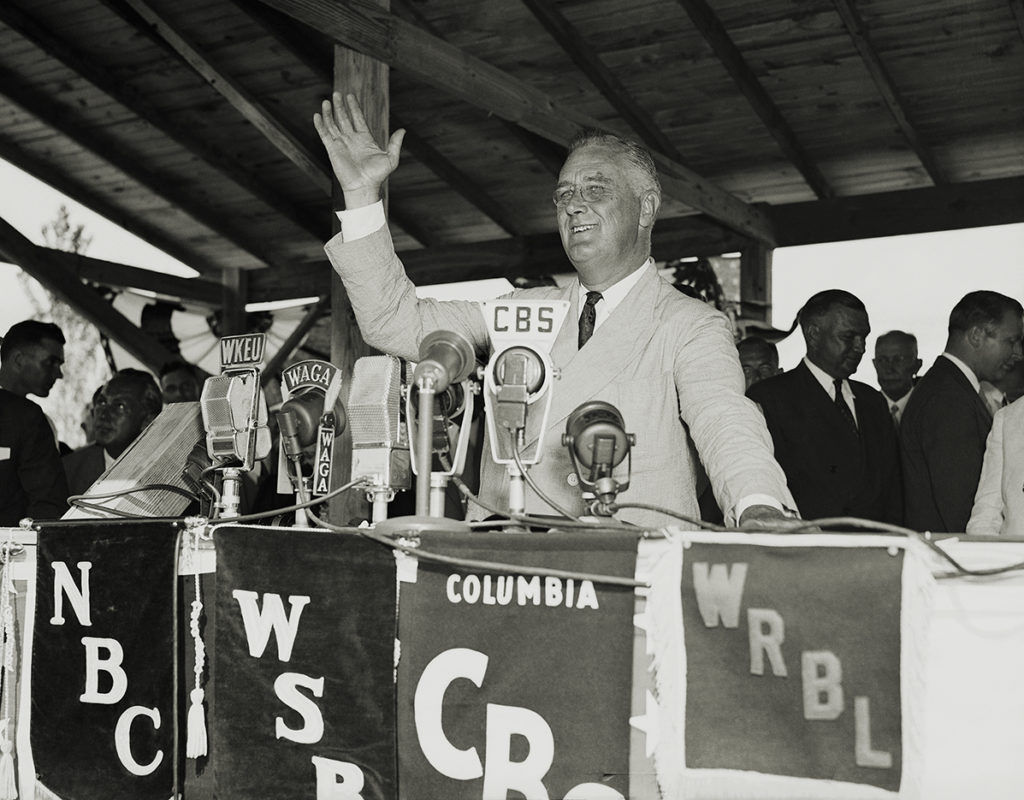
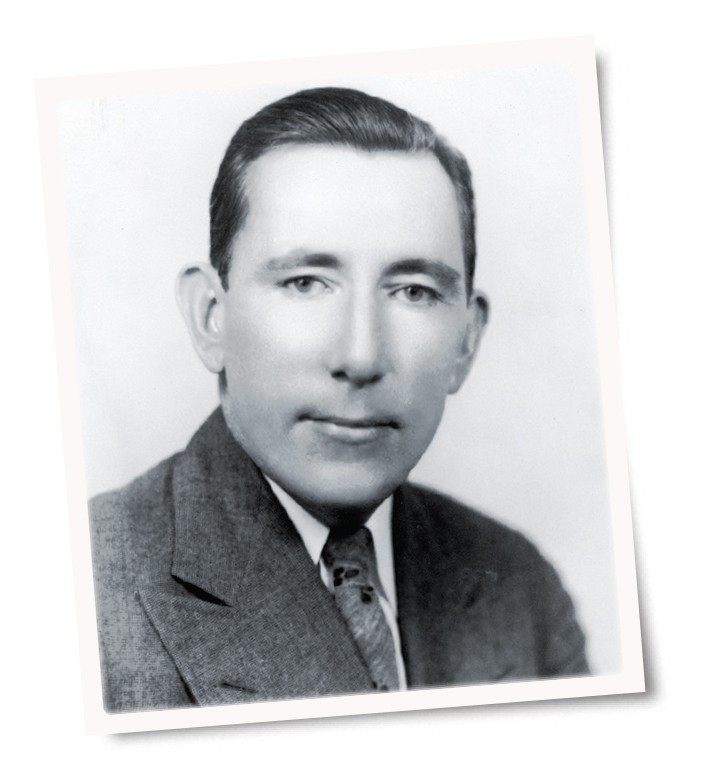
These setbacks, and roosevelt lieutenants’ efforts to blame the recession on business, split the Democratic Party and made it even easier for conservative Democrats to vote with Republicans. To lend the growing aisle-crossing alliance coherence, North Carolina’s Bailey and other senators from both parties began to compile a bipartisan list of conservative principles. Nearly all Democrats who had worked to kill the Court-packing bill participated. Leaked by Senate Minority Leader Charles McNary of Oregon, who feared the statement would overshadow a Republican platform being developed, the document was headlined by the Washington Post on December 15. Bailey immediately read the contents into the Congressional Record, and critics soon labeled the statement a “conservative manifesto.” New York Times Washington bureau chief Arthur Krock predicted that the bipartisan alliance would make the passage of progressive legislation as difficult as “pulling hippopotamus teeth.”
Roosevelt fought back in a nationally broadcast speech at the Democratic Party’s Jackson Day dinner in January 1938. He depicted himself as the leader of a largely progressive party concerned with the welfare of the nation as a whole, one that had no place for those giving regional issues higher priority. His message was a scarcely veiled threat to conservative Democrats, mostly Southerners. He repeated the argument in an April fireside chat, during which he called for more federal spending to boost consumption and get more Americans working again. But he also hinted that the larger goal was not merely economic. Unemployment and poverty had led some European countries to embrace fascism, and FDR implied that the survival of the American republic and its system of government were at stake.
But, as journalist Krock had foreseen, the president’s declining popularity and the coalescing of conservatives across party lines made new domestic initiatives more difficult. During Roosevelt’s first term, the economic emergency had made possible bipartisan alliances, but by the middle of his second term FDR was trying to solidify Democratic ideology. Though not expecting Republican support, he hoped to neutralize Democrats who had been opposing his proposals.
Roosevelt’s main recourse was to strike out at disloyal senators up for re-election by supporting more progressive opponents in state primaries. This tactic radically broke with tradition—presidents rarely intervened in individual races. Critics branded the campaign a “purge,” with all the inflammatory connotations suggested by Joseph Stalin’s recent show trials and subsequent executions of supposedly disloyal Communist Party members.
As in the Court episode, Roosevelt again overestimated his power and gambled his prestige. Party Chairman James Farley recommended against the gambit, saying, “Boss, I think you’re foolish.” But two primary victories encouraged the president to press on. Congressman Lister Hill overcame conservative former Senator Howell Heflin in a Senate primary for an open Alabama seat, and Senator Claude Pepper defeated a conservative foe in the Florida primary. FDR was also cheered on by liberal advisers Harold Ickes, Thomas Corcoran, and Harry Hopkins.
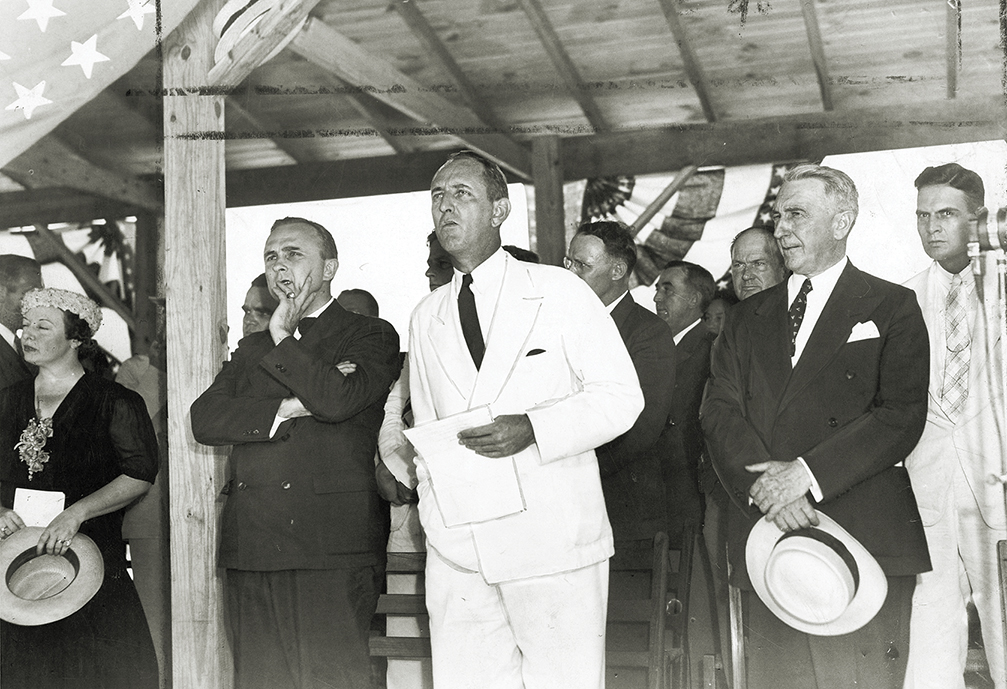
Roosevelt initially targeted three House members and 10 Democratic senators for defeat. In the House he went after O’Connor, Cox, and Howard W. Smith of the Rules Committee. Including O’Connor made clear the primary treatment was not just an attack on conservatives in the “solid South” but also on those with ties to centrifugal elements of the party, including state and local machines and other interests that outweighed loyalty to the unified national party Roosevelt sought.
His target list shrank. Among the senators, Guy Gillette of Iowa faced the voters first and won his June primary by a ratio of almost two to one. Four senators were soon dropped from the hit list—they seemed too secure or their primary opponents too weak—Alva Adams of Colorado, Augustine Lonergan of Connecticut, Pat McCarran of Nevada, and Champ Clark of Missouri. In Tennessee, George Berry lost his primary without Roosevelt’s intervention because he crossed Memphis political boss Ed Crump. Indiana’s Frederick Van Nuys avoided a primary by orchestrating his renomination by acclamation at the Democratic state convention. That left three senators in Roosevelt’s crosshairs: Walter George of Georgia, who since 1933 had been voting against Roosevelt’s initiatives one third of the time; Ellison D. “Cotton Ed” Smith of South Carolina, who had opposed the president almost half the time; and Millard Tydings of Maryland, who had voted against Roosevelt a stunning 77 percent of the time.
In August, returning to Washington from the West Coast, Roosevelt stopped in tiny Barnesville, Georgia, where about 40,000 people had gathered in a stadium. Some had come for his dedication of a project built by an electric cooperative built with a Rural Electrification Administration (REA) loan, but most were probably there for political fireworks.
Not only had the president telegraphed his planned purge, without names, in a fireside chat eight weeks earlier, but the day before, at the Warm Springs rehabilitation facility FDR considered his second home, he had endorsed one of Senator George’s primary opponents.
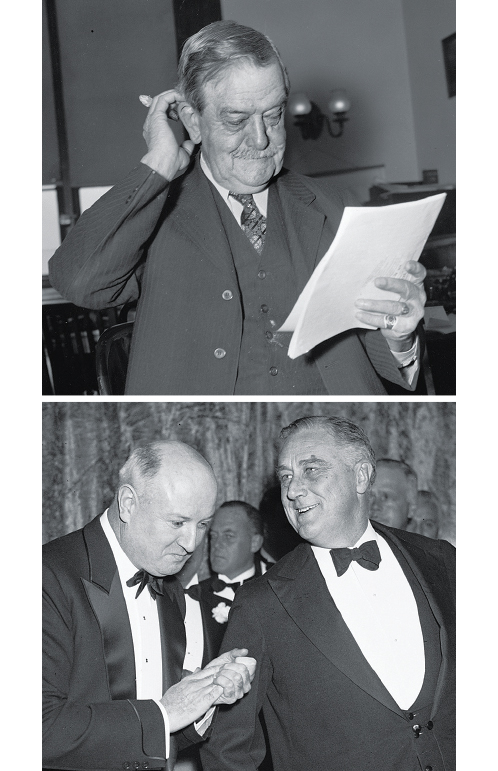
George, a gentlemanly former state Supreme Court judge, sat on the platform behind Roosevelt, as did George’s two primary opponents. The better known was Eugene Talmadge, an uncouth, race-baiting former governor given to bragging that he was “mean as cat shit.” Roosevelt’s candidate was Lawrence Camp, the young U.S. Attorney for Atlanta.
The president described the problems facing the South and his determination to use federal programs to fix those problems. But to do that, FDR said, he needed Congressional support. The principal issue in the campaign was therefore liberal versus conservative. Senator George “will always be my personal friend,” he said. But, he added, George “cannot possibly in my judgment be classified as belonging to the liberal school of thought.” Of Talmadge, Roosevelt said, “I am very certain in my own mind that his election would contribute very little to practical progress in government.” Camp, he concluded, “believes that many things must be done and done now to improve the . . . conditions of the country.”
The Atlanta Constitution, among the earliest of the major newspapers to endorse Roosevelt’s presidential candidacy, editorialized that FDR was seeking senators “who would unquestionably support every legislative proposal the White House saw fit to make. He has asked Georgia to furnish one of these ’yes men.’”
In a lighter vein, an Associated Press report indicated that FDR might have been less confident than he appeared during the speech.
At ceremony’s end, the president forgot the official purpose of his appearance; he failed to throw an open switch by his side to send electric current to an REA sign on the field and through the 144 miles of wire of the project.
Not naming Tydings, FDR made clear his scorn for disloyalty. Tydings made the president’s intervention his main issue.
Later the same day Roosevelt delivered a similar but oblique message at Greenville, South Carolina. On the rear platform of his Washington-bound train he was introduced by moderate Governor Olin D. Johnston, whom FDR had persuaded to challenge “Cotton Ed” Smith. The incumbent had earned his nickname with a pledge early in his career to “keep the N—–s down and the price of cotton up.” In opposing Roosevelt’s Fair Labor Standards Act Smith had called the minimum wage an assault on free enterprise and said farmers in South Carolina could live on 50 cents a day. The president didn’t mention Smith by name—he hardly had to after voicing his enthusiasm for Johnston—but he ended his informal remarks with a line everyone grasped: “I don’t believe any family or man can live on 50 cents a day.”
Roosevelt intervened most actively in the Maryland primary, giving six speeches backing Congressman David Lewis over the Labor Day weekend. Lewis was the House sponsor of the Social Security bill and a Roosevelt loyalist. Though FDR never spoke Tydings’s name, he made clear what he thought of party disloyalty: “Any man—any political party—has a right to be honestly ‘conservative’ or ‘liberal.’ But the Nation cannot stand for the confusion of having him pretend to be one and act like the other.”
Like his colleagues in Georgia and South Carolina, Tydings made Roosevelt’s intervention in the election the main issue in his campaign.
FDR had miscalculated badly. All three incumbents won handily. George received 44 percent of the vote, defeating Talmadge by nearly 40,000 votes and Roosevelt’s candidate Camp by nearly 65,000. Smith trounced Johnston 55 percent to 45 percent. Tydings whipped Lewis 59 percent to 39 percent. All were easily re-elected that November. Smith was asked after the election if Roosevelt was his own worst enemy. “Not as long as I am alive,” Cotton Ed crowed.
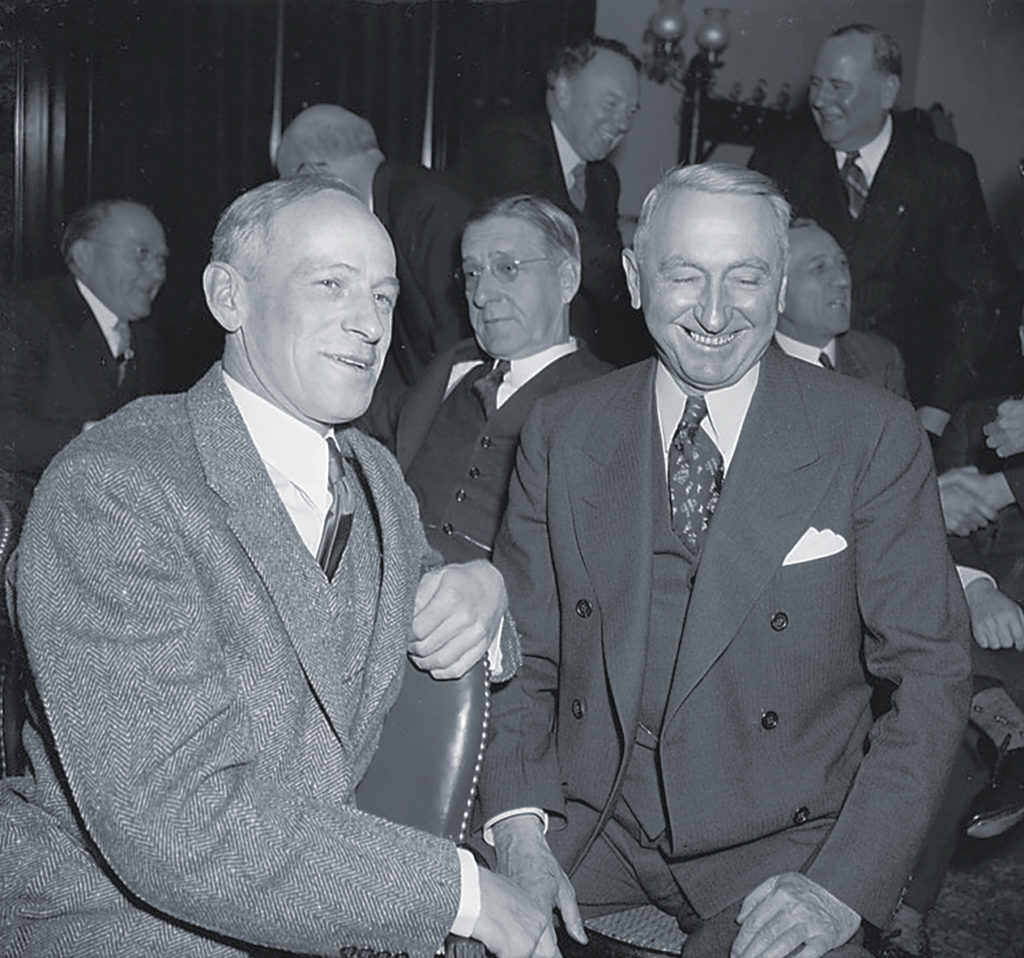
Roosevelt did savor the defeat of Congressman O’Connor, saying, “Harvard lost the league but won the Yale game.” But November offered him small consolation as Republicans gained eight Senate seats, 81 House seats, and 13 governorships. Democratic losses were disproportionately concentrated among New Deal supporters.
Instead of strengthening his hand in Congress, the president had strengthened the conservative alliance. Timesman Krock wrote, “The New Deal has been halted; the Republican party is large enough for effective opposition; the moderate Democrats in Congress can guide legislation.” Roosevelt’s pratfall cost him in three ways. It seemed to confirm his opponents’ view that he was power hungry, it turned some Democratic skeptics into strong opponents, and it made him look weak.
The attempted purge stemmed not only from FDR’s commitment to the New Deal but also from his conviction that the nation needed two responsible political parties, one liberal, the other conservative. He failed to achieve his goal, at great personal cost.
With the exception of largely bipartisan support for the war effort, the conservative coalition dominated the Senate for two decades until another landslide Democratic election in 1958 flipped a record 13 Senate seats. This influx of new senators representing states in the North and West rearranged what had been a nearly even liberal-conservative split within the Democratic caucus to about two-thirds liberal. Roosevelt’s goal of two parties with separate and coherent principles would not begin to be met until the 1960s and 70s, when irreconcilable tensions within the Democratic Party exploded, spurred largely by the Democrats’ adoption of a civil rights agenda. By the end of the 20th century, many officeholders and voters, mainly in the South, had switched party allegiance. The “solid South” was solid no more, and Roosevelt’s goal for two ideologically distinct national parties was coming closer to reality.
This article appeared in the Autumn 2022 issue of American History magazine.
GET HISTORY’S GREATEST TALES—RIGHT IN YOUR INBOX
Subscribe to our HistoryNet Now! newsletter for the best of the past, delivered every Monday and Thursday.

